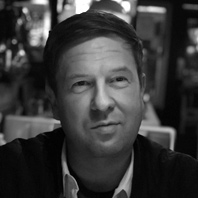Remaking Nosferatu (and does the vampire pic suck or not?)
The presence of Bill Skarsgård’s Orlok is when the film comes alive.

After many years, the director of The Witch tells his version of iconic vampire Nosferatu. It’s an assured technical marvel, says Rory Doherty – but why doesn’t it feel as sharp as Robert Eggers’ earlier, smaller horror?
One hundred years before Robert Eggers cast his reimagined version, F.W. Murnau’s Nosferatu entered the world—a silent blend of Gothic, romantic and expressionist horror that ripped off Dracula (or honoured, depending on your loyalties to the cinematic canon and/or Bram Stoker’s estate). Today it is regarded as an early titan of horror, the oldest surviving adaptation of the iconic character, and a reputation as “cinema’s first entirely cinematic vampire”.
The story mirrors Dracula in key ways: an ambitious, newly married estate agent (Thomas Hutter, rather than Jonathan Harker) leaves his wife (Ellen, rather than Mina) for a Transylvanian castle to sell a city house to an aged, eccentric noble. Enter Count Orlok—a rat-fanged, blanche-skinned, bald-headed noble—who commands the screen with inhuman features, sharp monochromatic shades, and cheeky comic timing. (Wait, we may have misremembered that last point…)
Eggers has been trying to make his Nosferatu since the premiere of his Puritan Punishment flick The Witch, but it’s good that he was afforded time and resources to expand his filmography before he adapted true horror iconography—for all its faults, Nosferatu is an assured technical marvel.
Eggers seems aware that his film will be inextricably indebted to the dense history of interpretations and pastiches (shades of Coppola’s Bram Stoker’s Dracula and Werner Herzog’s Nosferatu the Vampyre run throughout the 2024 film) but instead of taking the opportunity to expand his stylistic horizons, Eggers is content to simply up the scale and slot the vampire into a pre-established mould.
Like his previous works, Eggers’ Nosferatu adheres to a strict style of naturalistic performances, deliberate blocking, and ominous camera moves (not to mention an oppressive, inescapable heavy score)—but why doesn’t it feel as sharp as his earlier, smaller horror? Nosferatu is snared by the limitations of its style; none of its narrative choices feel ambitious or compelling enough to mark it as a unique interpretation. It’s not that Nosferatu lacks vision, but rather imagination.

The presence of Orlok (Bill Skarsgård) is when the film comes alive—a creature more shadow than man, draped in thick head-to-toe garments and speaking in a thick, accented voice that smothers the lone sources of light and warmth in his dank castle. The signs warning Hutter (Nicholas Hoult) of the doom awaiting him in Castle Orlok are heavy-handed to the point of dramatic irony—we’ve seen this story play out badly countless times already, but like many of the ignorant protagonists of Robert Eggers films, Hutter is trapped in a linear social and narrative trajectory.
The Nosferatu story distinguishes itself as a Dracula-riff with an emphasis on pestilence—as the plague wreaks havoc in Wismar, the union between the Hutters is infected and warped. The psychosexual urges that drive Eggers’ films are given ample opportunity to bloom here, but Nosferatu does not deserve the pre-release labels of “horny” that it has been eagerly assigned. Sure, Ellen’s (Lily-Rose Depp) fever gives way to sweaty moans of affronting, orgasmic pleasure, but the temptations of our supernatural Other are never complicated beyond Orlok’s direct, aggressive beckons to his mystical bride.

Depp does an admirable job: as prey to Death Itself, her gasping pleas and wide-eyed, harrowed expressions hit the exact, trembling pitch needed to sell how incongruous her suffering is with the 19th-century Germanic world around her. If Nosferatu: Eggers Edition has a central theme, it is that modernity will not save us. As Ellen falls ill to the malevolent influence of Orlok (a psychic link that traces back to her childhood, as seen in an opening scene that mirrors the closer of The Witch), she is surrounded by professional, scholarly men whose blunted, incurious knowledge of female health frustrates in an audience who empathise more with the breadth of gendered psychological and physiological suffering.
But it also means there’s little tension as the men of Nosferatu plan to eradicate the plague haunting Wismar. Eggers does little to improve on the common Dracula critique that the story deflates when the characters begin to hunt down the vampire, and the addition of a crazed, Occultist professor (Willem Dafoe as a Van Helsing stand-in) does startlingly little to liven up a vampire film that’s allergic to raw vitality or impulse. We may have tacitly assumed that Robert Eggers, with his meticulous, authentically designed dread in historical rooms, would be a perfect fit for Nosferatu; now we must reckon with Eggers making Nosferatu not being the same thing as Eggers offering an worthy, robust update to the text.

Murnau’s film may be a manuscript for Gothic and vampire cinema, but its coding of an Eastern European Other as a detestable foreign containment complicates its legacy. (Does the film personify the baseless fears of a Europe in flux, or dramatically enforce them?) Foundational genre texts are there to be played with, but Eggers doesn’t play with it enough. His actors hit their marks and deliver their lines in a manner that suits a vision of naturalistic bleakness, but there’s little variety to the horror and it never becomes truly scary. The more grounded dramatic scenes are neutered by the severe shooting style which adds a constrained and artificial air as it tries to muster atmosphere—it’s stagey without being theatrical.
Adapting horror iconography should allow a filmmaker to reconfigure how they tell stories, but there is nothing radical in Nosferatu; it is a large-scale exercise in repeating visual, tonal, and dramatic language that we have seen before, for a narrative interpretation we are even more familiar with. We get the highs of embellishing the fatalistic, oppressive disposition of a post-Enlightenment, post-Romantic horror tale (things do feel demonic in Orlok’s company), but are forced to suffer the lows. By never wavering on the tenor and intensity of bodily and harm, Nosferatu too often coasts without a pulse. Now we know what it was like on the Demeter.

























